Keeping an eye on the north east
by Jann Williams (photos supplied by Jann)
On June 11th 2016 the International Shinto Studies Association (ISSA) held its second fieldwork program. The afternoon program, which visited Sudo Shrine and Sekizan Zen’in Temple in north east Kyoto, was led by Reverend Yoshinobu Miyake, the Chair of the Board of ISSA. I learnt of the field day through Green Shinto and after contacting Reverend Miyake my husband Tony and I were accepted into the program. On the day we met at 1 pm at Kokusaikaikan Station and were taken by taxis to the two sites.
As Tony and I are both ecologists, we thought that a day of field work would involve some work in the field (e.g. helping tidy up the shrine/temple grounds), so we dressed accordingly. Next time we will know to wear different attire, with the other participants being dressed more formally. This is illustrated in the group photo taken at Sudo Shrine below. As the only participants who did not speak Japanese, we appreciated the Reverend translating some of the information for us.
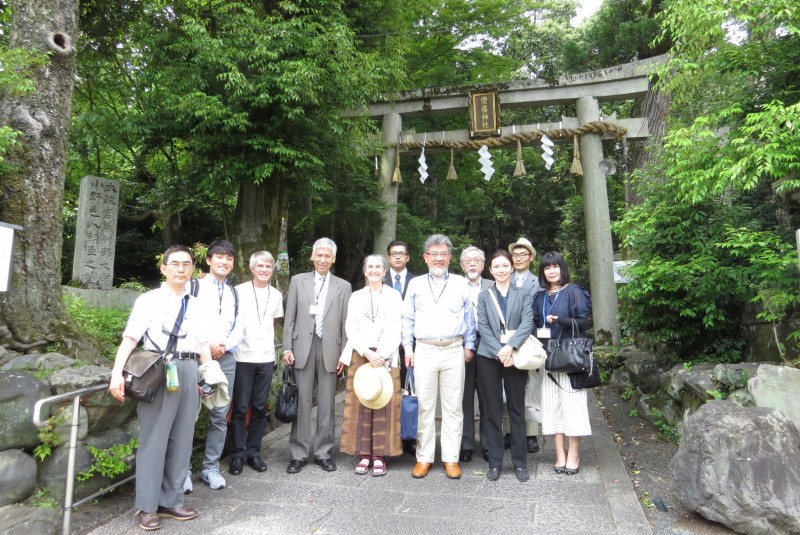
Even without hearing the full story, being able to visit these two sites was worthwhile and we appreciated the opportunity to do so. Both the shrine and temple are located on forested slopes which added to the enjoyment of the afternoon. The vibrancy of the vegetation in early summer was a sight to behold.
The original Green Shinto article advertising the ISSA event has links to more information about the Shrine and Temple we visited, including an informative interview with the priest at Sezikan Zen’in Temple. As a consequence I will limit this report to a few impressions of the field day with some accompanying images.
Sekizan Zen’in
The two sites were located to the north east of the original Imperial Palace in Kyoto, as shown in the next image. The spirit gate called Kimon, which is used by demons, is believed to stand in the north east. The Tendai sect temple we visited, established in 888, has been widely worshipped as the protector of people from bad luck coming through this gate.
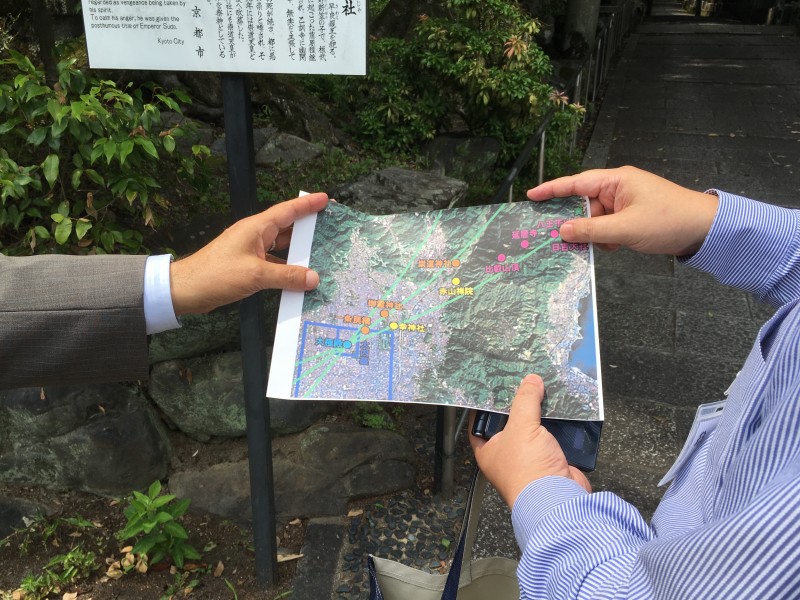
A monk from the temple shared many stories with us, including about the monkey imagery at the temple (seen below on the rooftop behind the monk), the Mt Hiei thousand day practice the ‘marathon monks’ underwent, the origin of the pilgrimage of Kyoto’s Seven Deities of Good Luck, and the importance of the polar star. It was all fascinating and information that otherwise would be challenging to uncover. The ability to see inside some of the temple buildings at Sezikan Zen’in and take photos was appreciated.
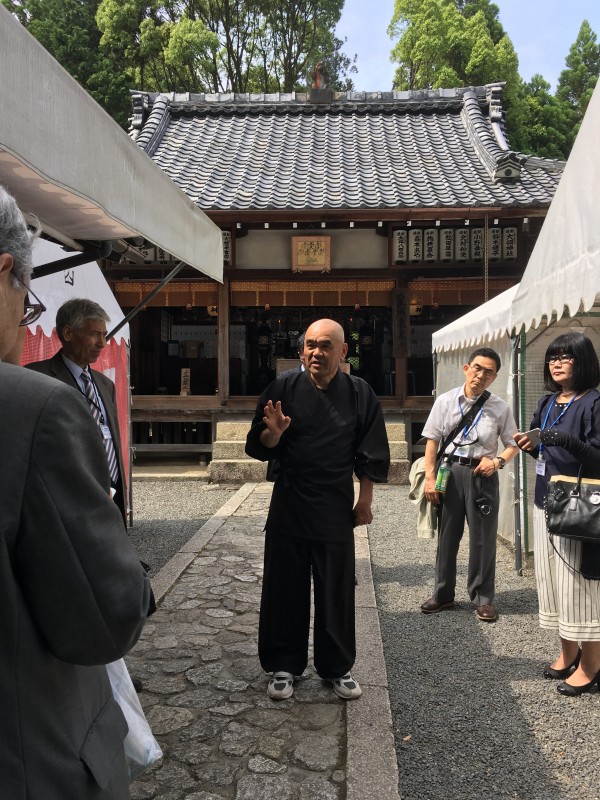
The temple is known for its syncretic nature, with many Shinto elements apparent at the site including torii, ema and shide. The rosary-shaped gate you walk through reminded me of the chinowa that are gracing shrines at the moment – although in the case of the temple the fixture is permanent. In the next image Reverend Miyake is explaining that you can only make one wish as you walk through the rosary gate. Recently I have visited the Hozanji Shingon Temple at Ikoma which also has a strongly syncretic nature. These places provide some sense of the intimate connections between Shinto and Buddhism before the shinbutsu bunri, the separation of kami and buddhas, in 1868.
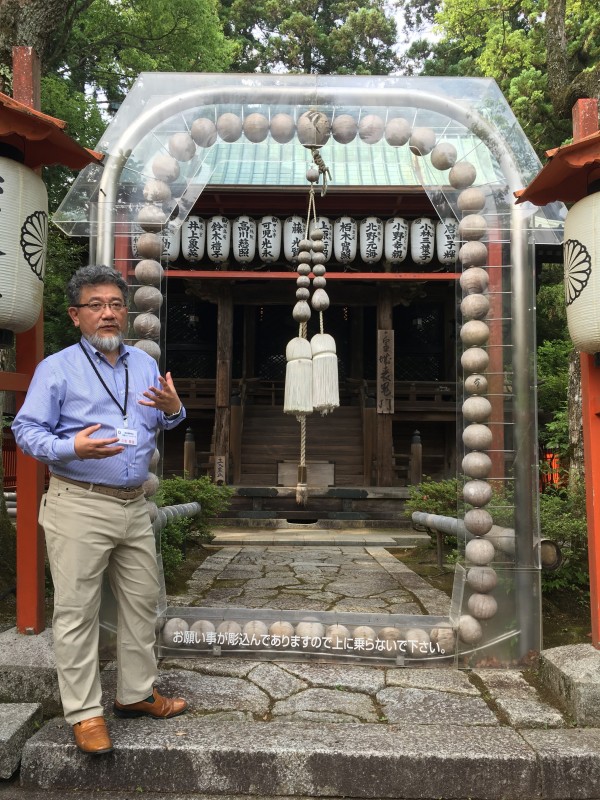
In addition to the Shinto aspects of the temple, the links to China were a feature of the visit for me. For example, the importance of directions such as the north east stems from Chinese geomancy. According to the information board provided by Kyoto City the principal statue at the temple, Sezikan Myojin, was made by the high priest Jikaku Daishi as a double image of Taizanfukun (Dosojin, the guardian deity for the community, in the yin-yang philosophy) in Sezikan, China. I have a particular interest in yinyang and the associated five Chinese elements as part of the research I am undertaking on the elements in Japan.
Sudo Shrine
Sudo Shrine also has a long history. It was established to enshrine the avenging spirit of Prince Sawara Shinno after he died of hunger in 785 AD. On arrival we participated in a purification ceremony at the Shrine. The following image of the service was provided by Reverend Miyake. While I have been part of similar ceremonies at Oomoto, this was my first purely Shinto experience in an outdoor setting. It was one of many special program activities organised during the afternoon.
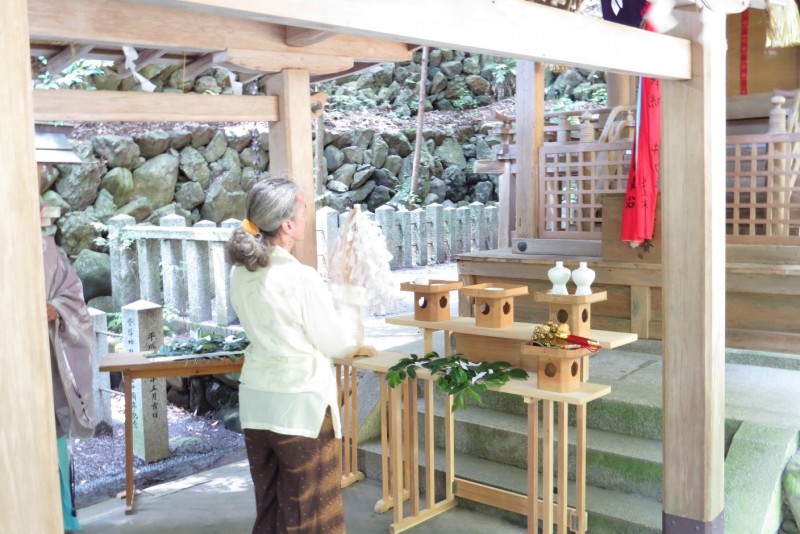
The two cones of sand in front of the main shrine (pictured below), each with a sakaki branch and shide in them, reminded me of similar cones I have seen at Kamigamo Shrine (which have pine needles in them) and at Zen Temples such as Myoshin-ji. I was told the cones at Sudo Shrine were related to mountain deities. At Kamigamo Shrine they represent yin and yang. At Zen Temples they have been linked to purification. It is interesting and important to contemplate the shared imagery and rituals between Buddhism and Shinto, as Green Shinto has recently done with Zen. As was shown, there is more that connects them than meets the eye.
The ISSA fieldwork program, while it was not what Tony and I were expecting, was an informative and enriching day. The pace was quick, with presentations given by two priests at the Shrine, a monk at the Temple, and Reverend Miyake at both locations. It was a lot to take in. In hindsight it would have been helpful to take some notes to record some of the finer details we were given. There was also limited time to take photographs, one of my favourite pastimes. All useful lessons if the opportunity to attend another field day arises. I would definitely recommend it.
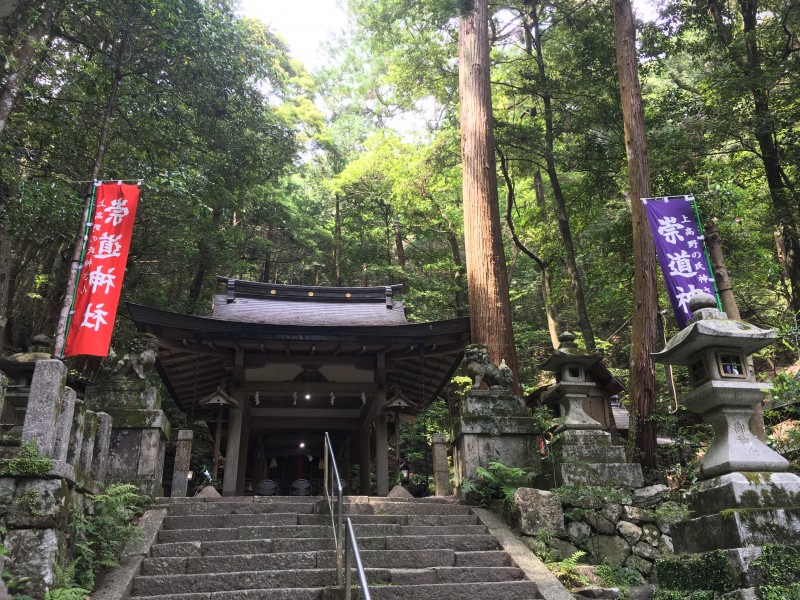

Leave a Reply